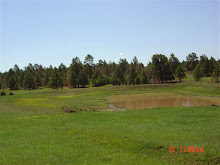Most Barnett Shale facilities release emissions
09:48 AM CDT on Sunday, April 11, 2010
By RANDY LEE LOFTIS / The Dallas Morning News
rloftis@dallasnews.com
Plumes of toxic, smog-causing chemicals from Barnett Shale natural-gas operations are so common that inspectors find them nearly every time they look, a Dallas Morning News examination of government records shows.
What's more, the inspectors have rarely looked.
Hundreds of pages of documents obtained by The News under federal and state open-records laws, plus other reports and studies, reveal a pattern of emissions of toxic compounds, often including cancer-causing benzene, from Barnett Shale facilities.
More than 90 percent of the gas-processing plants, compressor stations and wells that agencies have examined with leak-detecting infrared cameras since 2007 were lofting otherwise invisible plumes of chemicals. In the most recent surveillance late last year, every facility checked was emitting pollution.
Many were near homes, emblematic of drilling's spread into North Texas urban areas. One was next to the University of Texas at Arlington. Another was just over the right-field fence of a Decatur softball field.
Gas operators say most pollution the cameras caught was routine and legal, requiring no repairs. Even authorized emissions face new scrutiny as state and federal regulators cope with drilling's impact in Tarrant County and areas to its north, west and south.
The infrared cameras – the newest ones cost $106,200 each, including lenses, plus $1,000 per user for training – are potentially powerful weapons against environmental violators and sloppy operators, revealing problems that neither inspectors, neighbors nor companies can see. The Texas Commission on Environmental Quality has two new ones and six older models.
State and federal agencies have aimed infrared cameras at only a tiny fraction of the 13,000 natural-gas wells and support facilities that have appeared across North Texas since 2005.
The fact that regulators find chemicals rising virtually every time they aim the camera suggests that a comprehensive search might reveal thousands of releases of volatile organic compounds into the air – some authorized, some not.
Months after companies told the TCEQ that they had fixed any problems the state's cameras detected, other scientists found chemicals wafting into the atmosphere.
"We found emissions from wells, condensate tanks, compressor stations" – just about every component of the Barnett Shale production system, said Wilma Subra, an environmental scientist helping the Denton County town of Dish monitor air pollution.
"There are toxic air emissions being released by the majority of the facilities that we have looked at."
Texas officials acknowledge that just about every Barnett Shale installation emits invisible air pollution.
"When we aim the camera at any one of these facilities, be it a compressor station or a condensate tank battery, we are going to see some emissions," said John Sadlier, the TCEQ's deputy director for enforcement. More>>>






0 comments:
Post a Comment